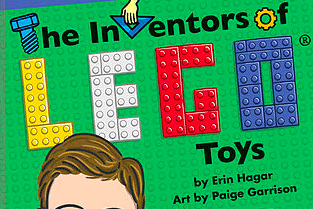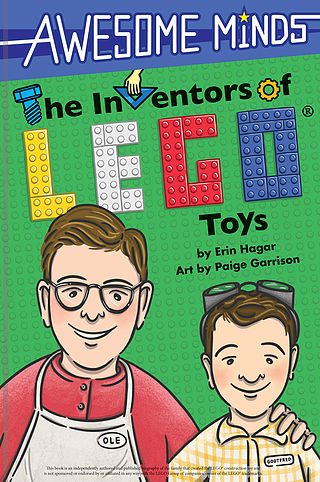Towson-based author Erin Hagar has a new book out today titled “The Inventors of LEGO Toys,” published by Duopress.
“Everyone has played with LEGO toys, but not many people know who is behind this awesome invention. This fun and engaging book tells the story of how a Danish carpenter and his family, facing a desperate situation, ended up creating the most popular toy in history,” the publisher says.
You might have read about Hagar in The Baltimore Sun last year when her book “Julia Child: An Extraordinary Life in Words and Pictures” was published.
Her new book is part of an “Awesome Minds” series; the next book — by a different author — will be “The Inventors of the iPhone” and is scheduled for release in the spring of 2017.
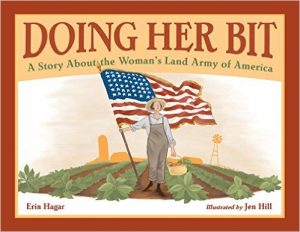 Hagar has another book coming out this fall called “Doing Her Bit.” The amazon.com description says: “Based on true events, this fictional story traces the history of the Women’s Land Army during World War I. Real-life ‘Farmerette’ Helen Stevens trains to farm the land, negotiates a position for herself and other women, and does her bit for the war effort. This unique book celebrates the true grit of American men and women.”
Hagar has another book coming out this fall called “Doing Her Bit.” The amazon.com description says: “Based on true events, this fictional story traces the history of the Women’s Land Army during World War I. Real-life ‘Farmerette’ Helen Stevens trains to farm the land, negotiates a position for herself and other women, and does her bit for the war effort. This unique book celebrates the true grit of American men and women.”
Here’s a Q&A that Hagar was kind enough to do with The Towson Flyer:
What made you want to write about LEGOs?
LEGO bricks are so much a part of our world that they feel like they’ve always been here. The publisher, Duopress, was interested in exploring how such common — and adored — objects come into our lives. LEGO seemed like a perfect topic.

Author Erin Hagar
Were you a LEGO fan? Are your kids?
Absolutely, on both counts! DUPLOS were an important part of my kids’ toddler years. I have such good memories of making things like imaginary zoos and swimming pool scenes with them. As they got older, I loved watching them tackle the more complex sets and making their own LEGO creations.
Without giving too much away, what are a few fun facts about LEGOs and their backstory?
Well, the company started out as a family carpentry business, making barns and other buildings in the small town of Billund, Denmark. When the Great Depression hit, the founder, Ole Christiansen, started making smaller wooden objects, like toys. He found that even in desperate economic times, parents still wanted to make their children happy.
Ole wasn’t afraid to innovate. He was one of the first companies in Denmark to buy a plastic molding machine, and his company made all kinds of plastic toys. There was a period of time when their plastic brick — the early version of the ones we know today — was one of LEGO’s poorest-selling toys, until Ole’s son, Godtfred, decided to go “all in” and make it the focus of the whole company.
How did you research this book?
It was really a matter of synthesizing information from lots of different places. The LEGO Group wrote a history of the company that was published in 1982, celebrating its 50-year anniversary. It was hard to find but really helpful. There are books written about the company from a business perspective, and a really comprehensive look at the company written by a British author named Sarah Herman. I would have loved to have gone to Billund myself, but deadlines and budgets made that impossible. Someday!
What other books have you written?
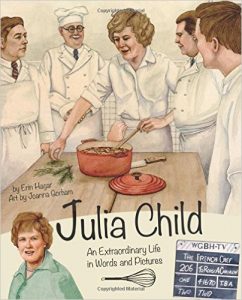 My first book, also from Duopress, is a biography of the amazing television cook and cookbook author Julia Child. I have another book called “Doing Her Bit” coming out in September from Charlesbridge. It’s a picture book about a group of women who filled a farm labor shortage during World War I.
My first book, also from Duopress, is a biography of the amazing television cook and cookbook author Julia Child. I have another book called “Doing Her Bit” coming out in September from Charlesbridge. It’s a picture book about a group of women who filled a farm labor shortage during World War I.
When do you actually do your writing?
By nature, I’m a morning person. But my kids are turning into morning people, too, which makes it hard. I’m always trying to figure out the best time, but for me moaning over the right time is usually just code for “I’m struggling with my writing and avoiding it.”
What’s the best thing about writing a book like this?
Two things: First, knowing from the get-go that kids are going to be excited about the topic. So often when I write, I have no idea how the story is going to be received. But everyone loves LEGO, so the chance to tell the company’s story for kids was really exciting. The second thing is seeing the book come together — the playful (yet incredibly accurate) illustrations from Paige Garrison, the way the snippets of information are laid out on the page, the overall design of the book. That’s really fun and satisfying, because it’s such a great product at the end.
What’s the hardest?
I always struggle with the question of what to leave out. The LEGO story starts in the 1930s and is still going strong today. But you can’t include every single moment in the company’s history in a book like this — not if you want your readers to stay awake! The trick is to find that central question — in this case, how did the LEGO brick come to be? — and make sure every story in the book is either answering that question or adding to the kids’ understanding of the time period.
What do you think of LEGO kits (Star Wars, Harry Potter, etc.) vs the blocks where kids make up their own structures?
I think there are great things about both. Of course, free building is one of the most creative ways to play. But the experience of following the instructions to build a set is valuable too — there’s a lot of spatial learning and trouble shooting that goes on. And these two ways to play feed into each other. My son loves to build the sets, but by building them he learns new ways to build, which he uses in his o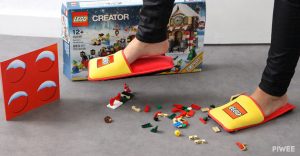 wn creations.
wn creations.
Do you own a pair of LEGO slippers or are they just ridiculous?
Those have not made their way into my closet. Yet.
Erin Hagar writes fiction and nonfiction for children and teens. After several years working in curriculum and instruction for colleges and universities, she earned her M.F.A. in Writing for Children and Young Adults from Vermont College of Fine Arts. She grew up on Maryland’s Eastern Shore and now lives in Baltimore with her husband, two children, and a few too many pets. Her website is erinhagar.com.
“The Inventors of LEGO Toys” is available at The Ivy Bookshop on Falls Road, The Children’s Bookstore in Roland Park, Barnes & Noble stores, and on amazon.com.
-Kristine Henry
If you know of a Towson-area resident doing neat things like this, contact me. He/she might be featured in an upcoming article.

